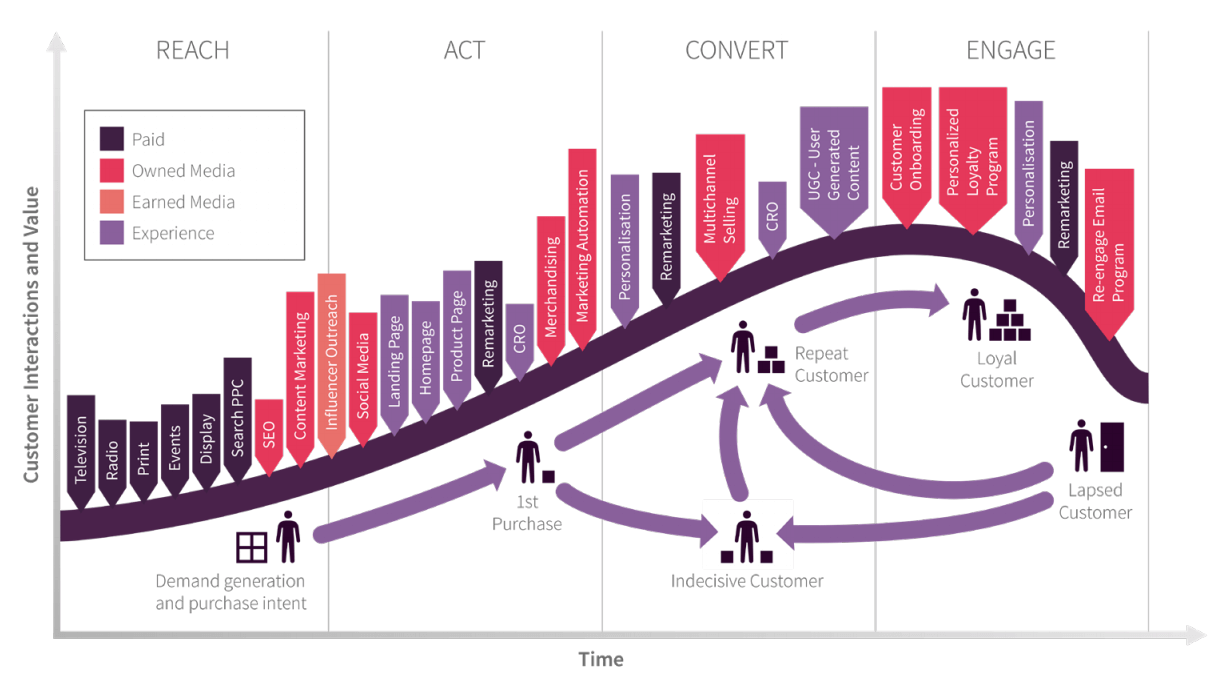The discussion of innovation in the management of advertising accounts is crucial because it sheds light on both current trends and potential futures. Account management has undergone noticeable changes as industries show a preference for quick digitization. There is no doubt that the proliferation of cutting-edge analytics tools and novel technologies is to blame for the propensity for innovation in the area of ad account management. A thorough analysis is created as a result of the paradigm shift to define these novel processes and determine their potential dominance. …………………………………….
The incorporation of operational and decision-making autonomy is one of the prevailing trends in ad account management. It is possible to see a noticeable shift away from traditional rigid models and toward more autonomous, adaptive models. Dynamic, self-optimizing systems are gradually replacing conventional account management mechanisms, which primarily served as static, intermediary channels. An individualistic approach to ad targeting and customization is made possible by this novel modality, which gives account managers more control. These systems support an evidence-based decision-making paradigm by matching data analytics tools. As a result, data-driven insights and Digital Branding adaptive systems are becoming more and more tethered to the purse-string in advertising spending. …………………………………….
Advanced tool development and integration are largely responsible for these insights and changes to the advertising landscape. Particularly, machine learning ( ML) and artificial intelligence ( AI ) have shown to be game-changers. These technologies ‘ assimilation improves predictive modeling and the process of extracting insights from vast datasets. Such cutting-edge technological innovations enable previously unheard-of agility in response to market changes. Thus, the fusion of AI, ML, and ad account management represents an innovative trend. ………………………
However, caveat emptor in this case refers to ethical conundrums brought on by AI use. Although these technologies have an unquestionable ability to increase efficiency and effectiveness, their inherent tendency to obscure human agency raises important ethical concerns. The academic community is engrossed in these discussions, but it is undeniably a crucial factor when analyzing how innovation will develop in account management in the years to come. …………………………………….
The growing trend of cross-functional teams in ad account management is compounding the role of technology. While siloed account management has historically been the norm, modern methods regret this isolationism. A strong preference for holistic, integrated strategies supported by a common vision is evident in the shift toward cross-functional teams. Companies are attempting to increase collaboration and coherence in their ad strategies by combining various talent pools into one unit. Advertising’s integration with other organizational roles, such as sales and product development, Online Reputation Management causes a significant structural change that improves the effectiveness of advertising campaigns. …………………………………….
Therefore, it is important for us to investigate how ad account management and customer relationship management ( CRM ) can be combined. This consolidation establishes a course of action that is centered on providing the client with value, increasing client loyalty, and fostering strong interpersonal ties. The commitment to better manage client accounts by thoroughly understanding their needs, realigning organizational objectives accordingly, is at the core of this strategic alignment. ………………………
Future applications of blockchain technology have the potential to revolutionize society. Blockchain technology addresses common problems with ad fraud and mistrust in advertising at an unmatched level of transparency and trust. Additionally, blockchain makes it easier to track consumer interactions, giving users important insights into their behavior. …………………………………….
In addition, the ad industry is currently experiencing waves of hyper-personalization, which is being encouraged by cutting-edge machine learning algorithms. It respects each customer’s individuality and customizes content and messaging to meet their needs. It aims to create advertisements that resonate with each individual consumer on a personal and emotional level by being endowed with the ability to transcend conventional mass marketing techniques. …………………………………….
These current trends unquestionably show the dynamic, constantly changing landscape of ad account management. These shifting trends will undoubtedly lead to a holistic, technologically advanced, and consumer-focused paradigm. However, some urgent problems continue to arise as these trends develop and come together in the future. There are significant obstacles that need to be further academic and practical clarified due to ethical conundrums, data privacy concerns, and consistency in the delivery of personalized content. Thus, the ad account management innovation trajectory becomes an intriguing field that calls for further analysis and consideration. ……………………………………



